Abstract
A multitrait - multimethod design was employed to assess the construct validity of three commonly used methods for assessing patient compliance: physiological assessments (e.g., blood chemistries), ratings by health professionals, and patient self-reports. Subjects were patients receiving ambulatory hemodialysis treatments for end-stage renal disease, whose regimen required them to take medications, to follow dietary restrictions, and to limit fluid intake. Study findings indicated that of the three methods examined, the nurse rating approach was the most valid (although it contained only about 50 percent valid variance). Measures derived from physiological assessments contained a substantial proportion of residual error (over 70 percent), and the patient self-report method contained only about 12 percent valid variance (with about 18 percent method-effects variance, and 68 percent residual-error variance). These results make clear the need for additional research directed at developing valid methods for evaluating patient compliance behaviors.
Full text
PDF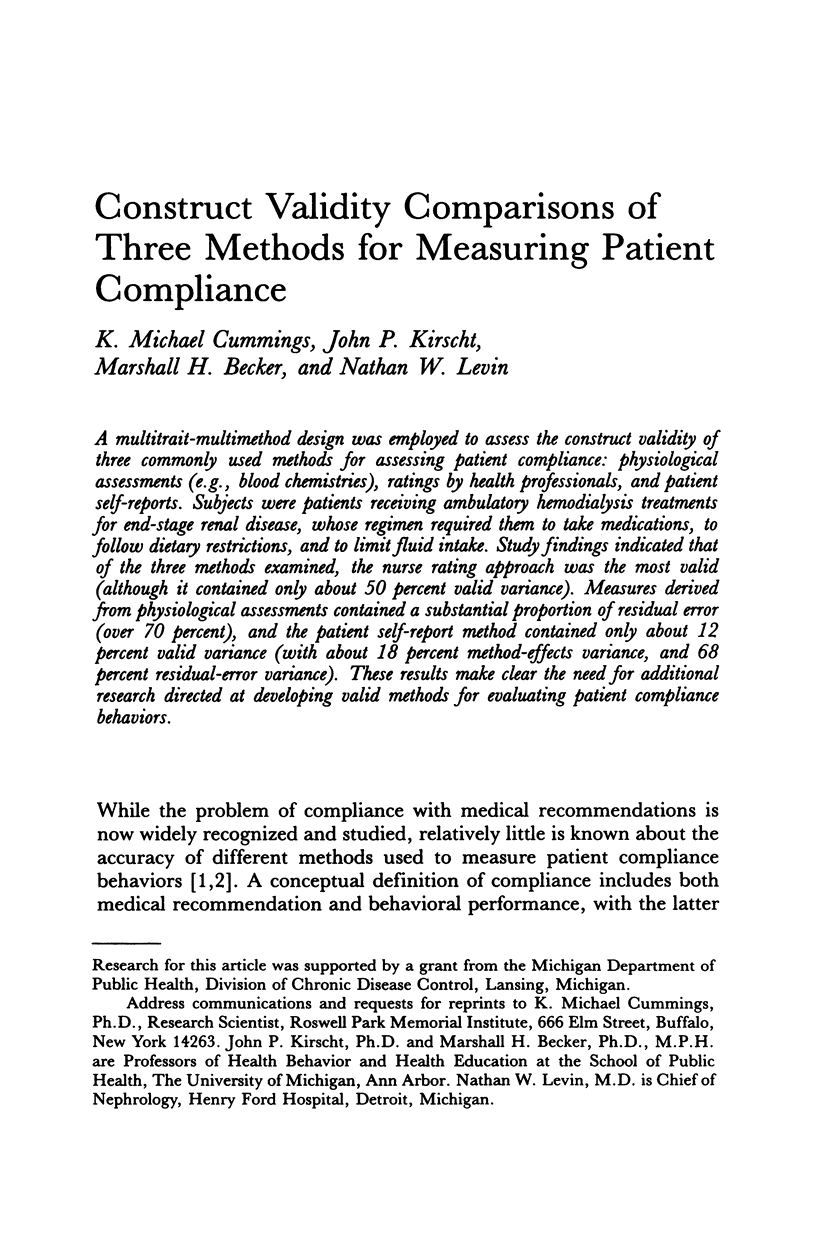
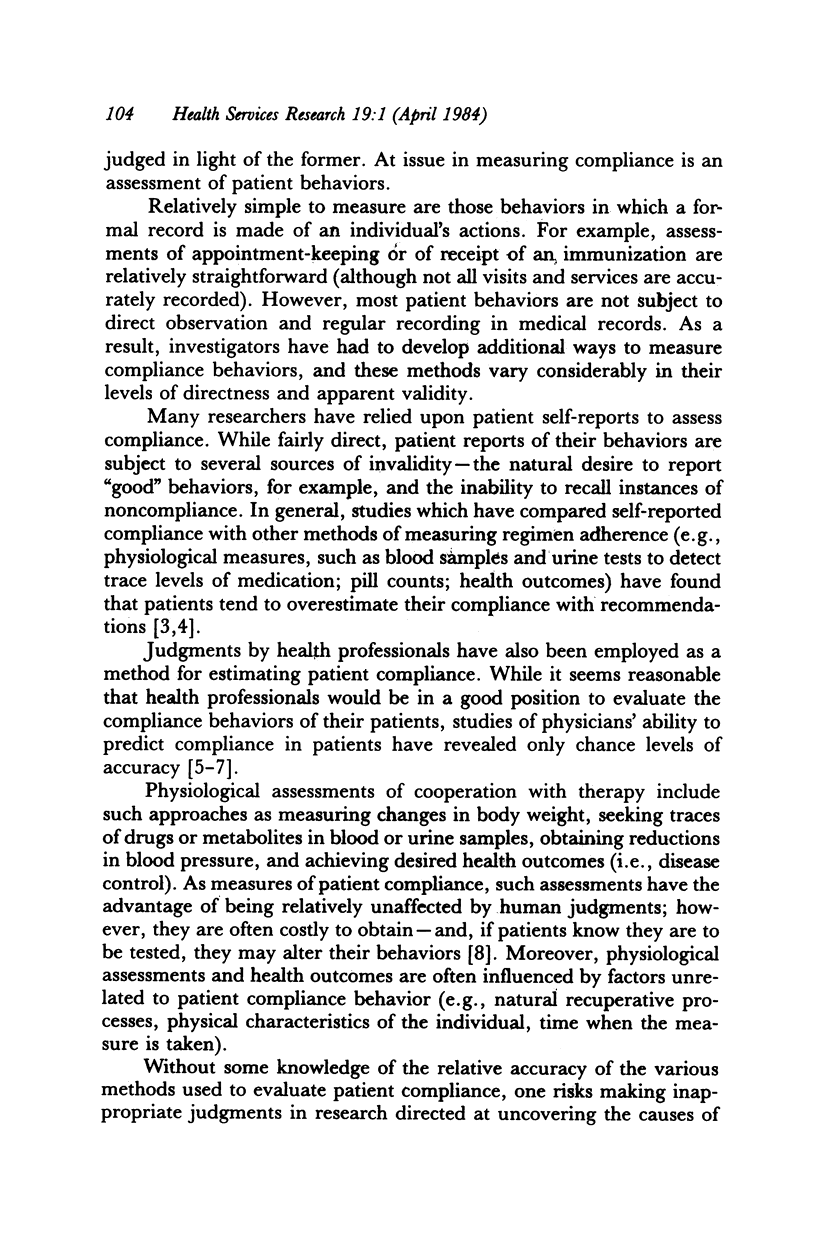
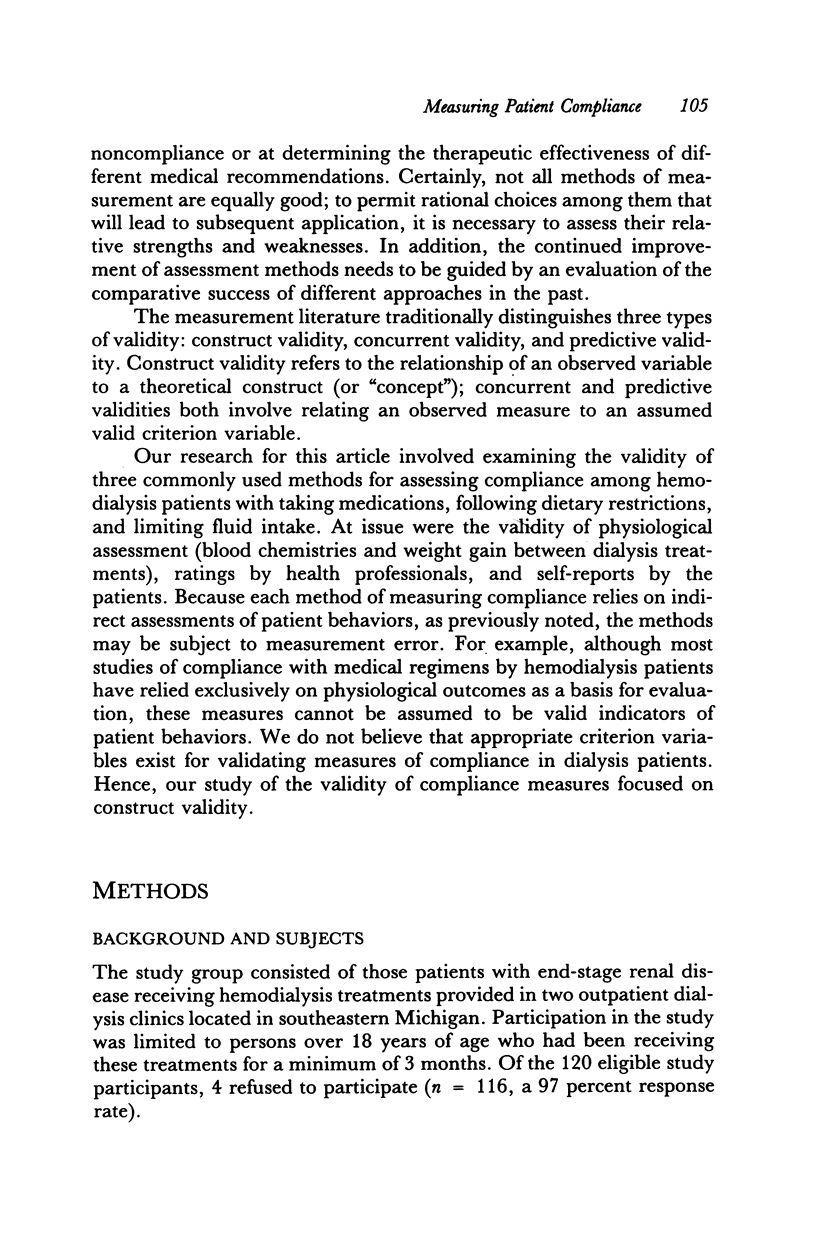
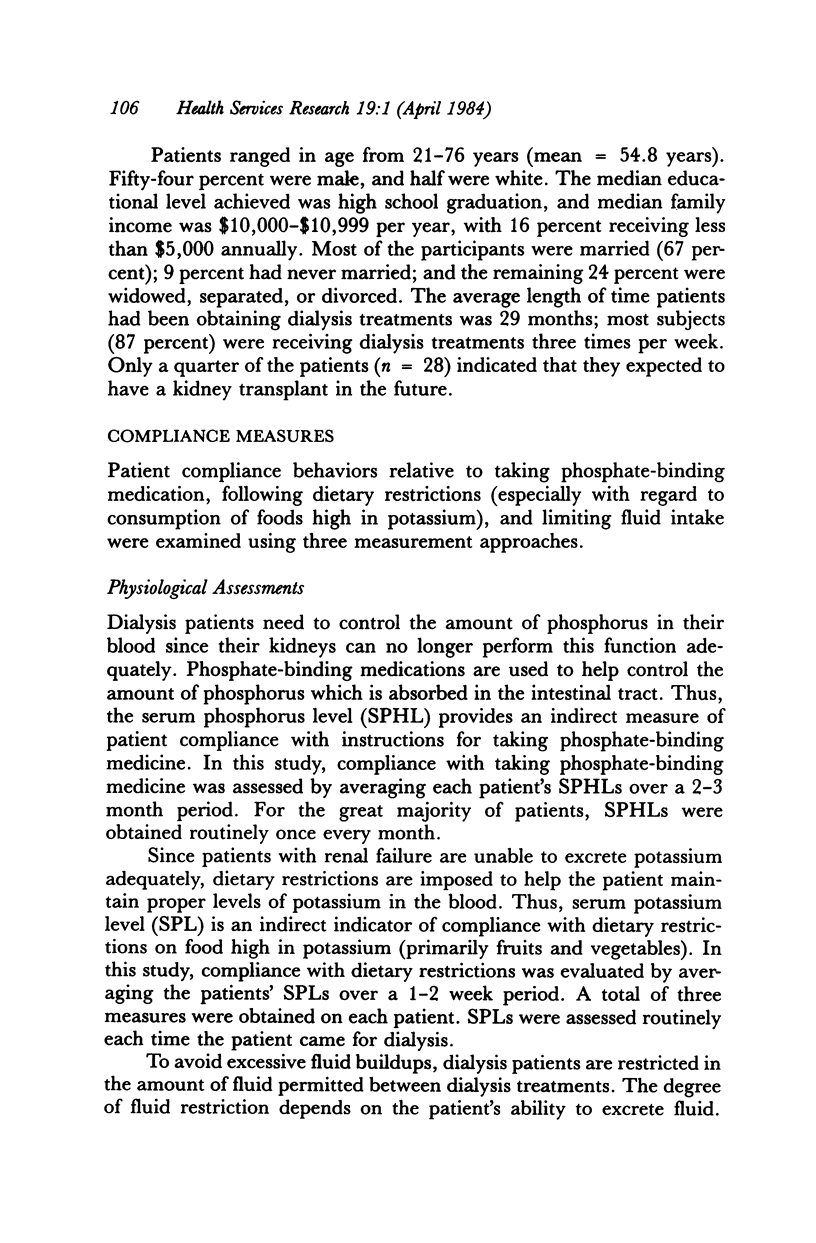
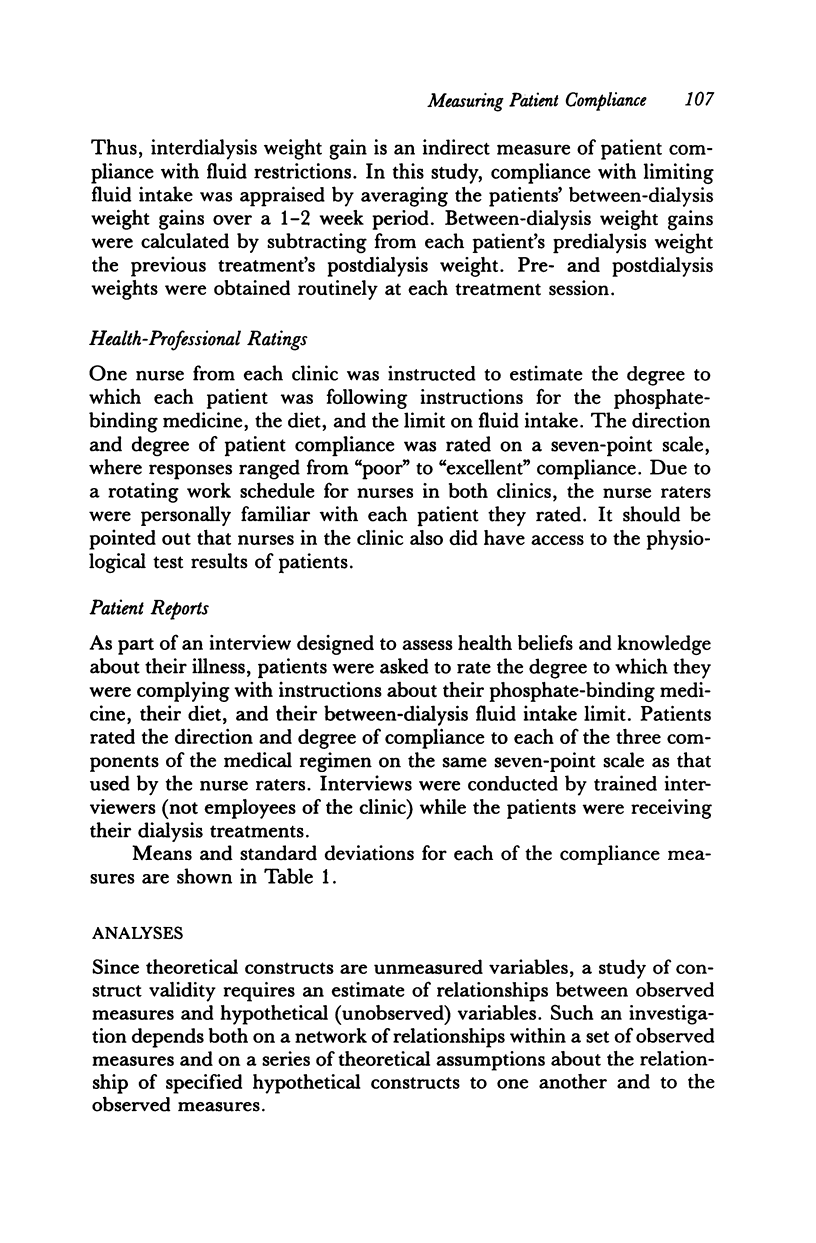
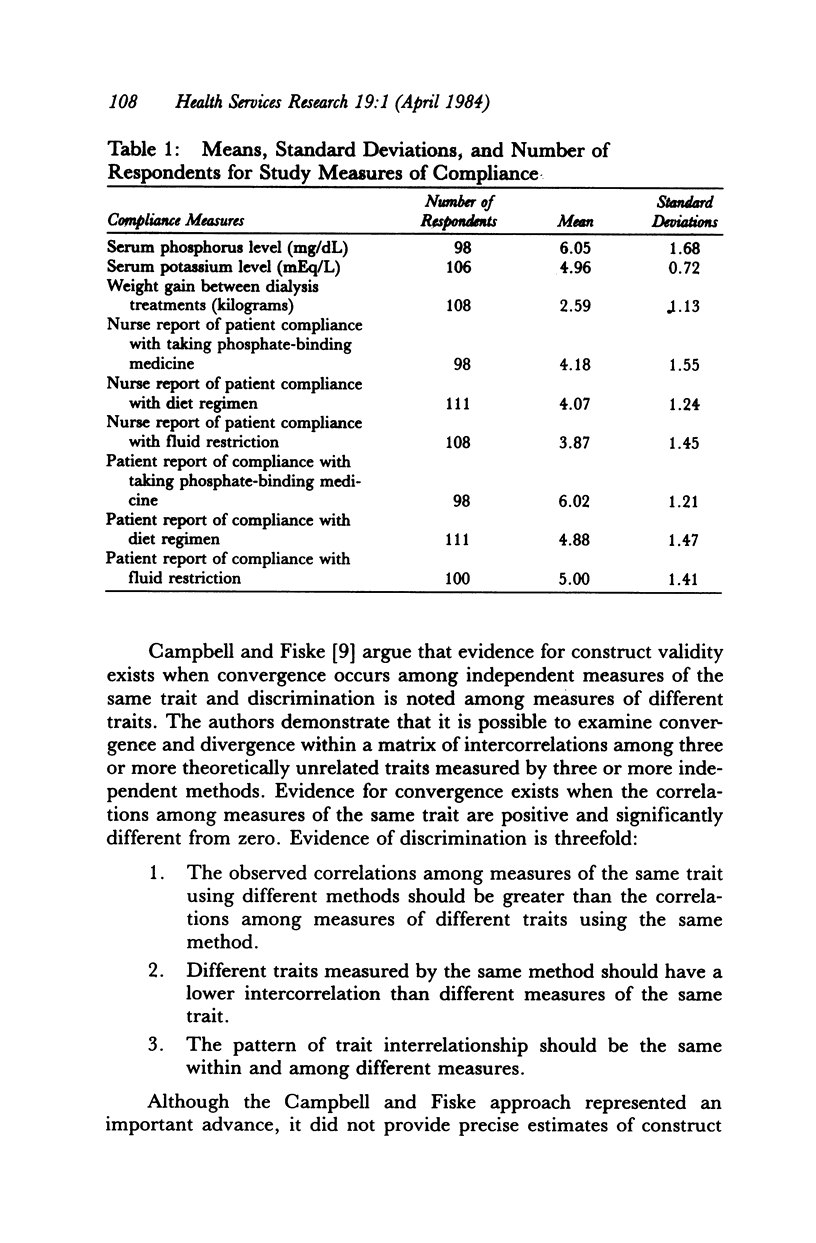
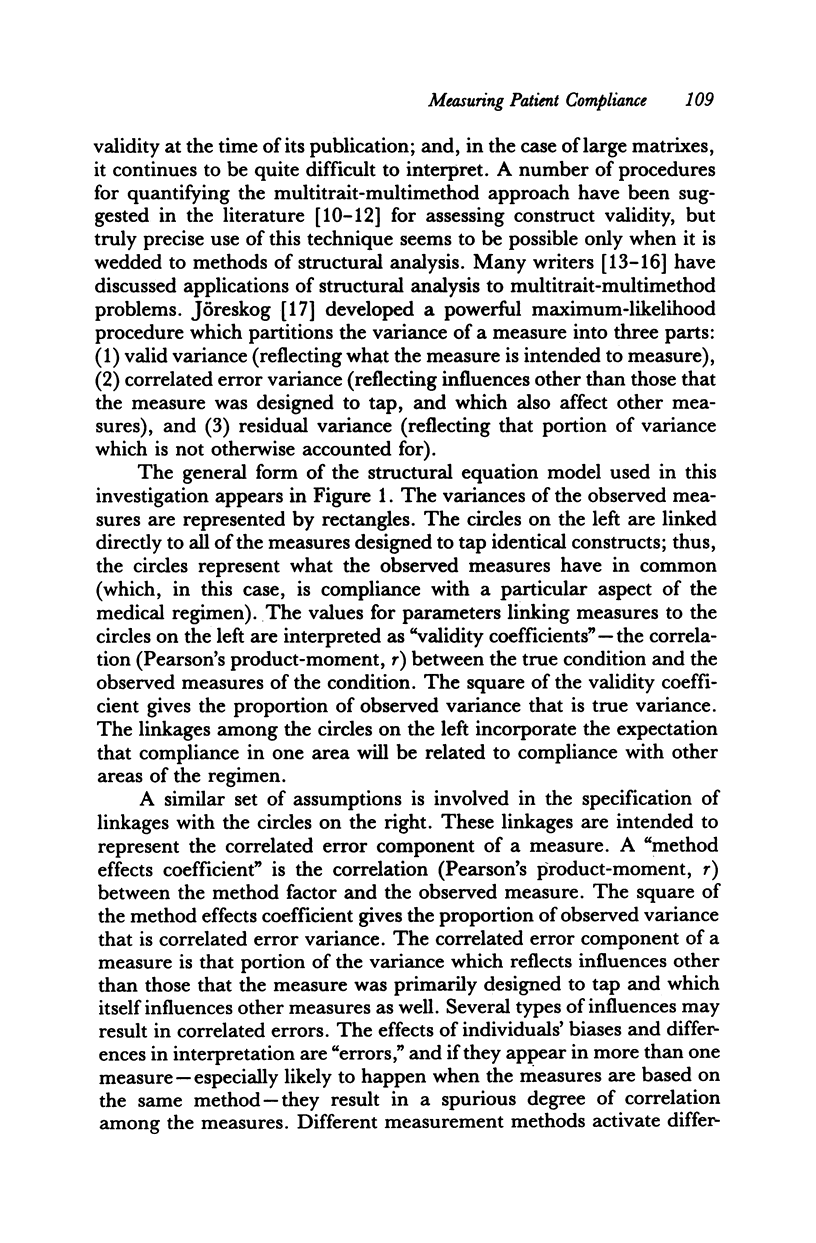
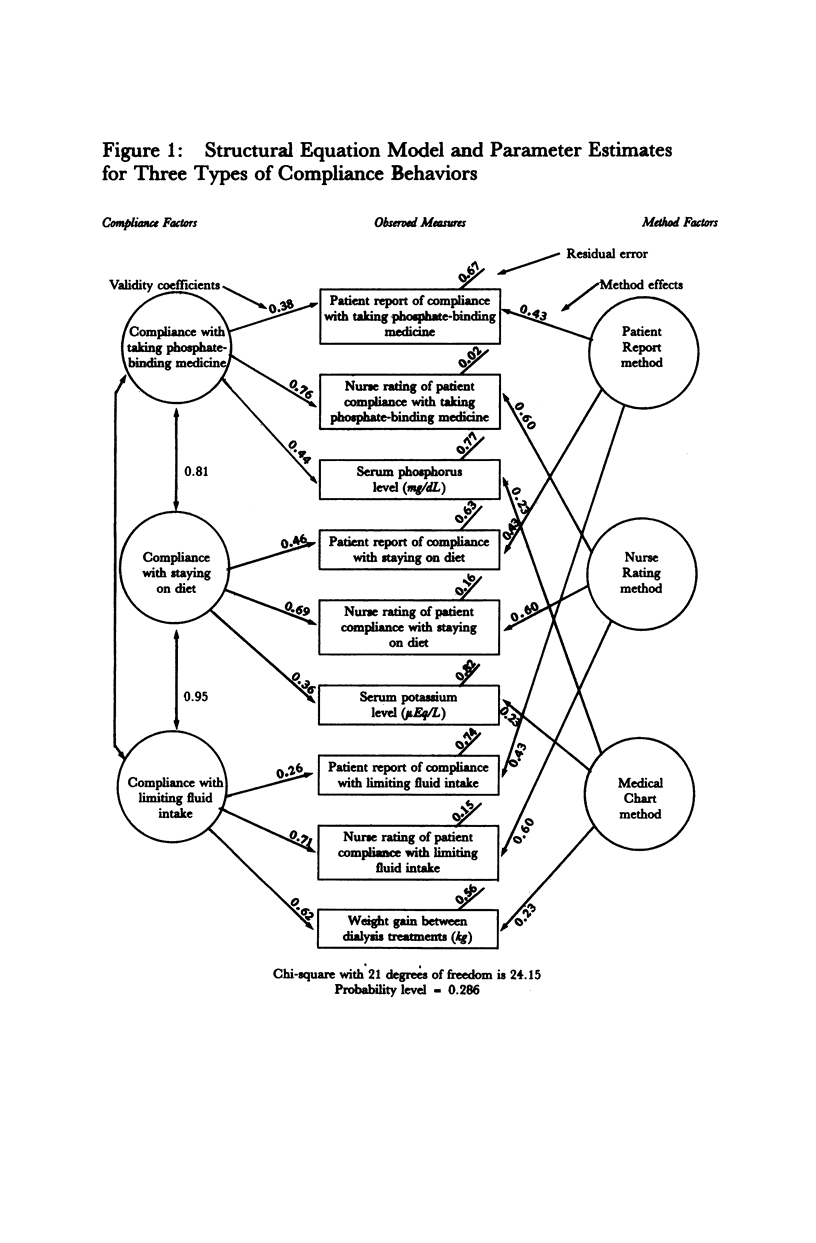
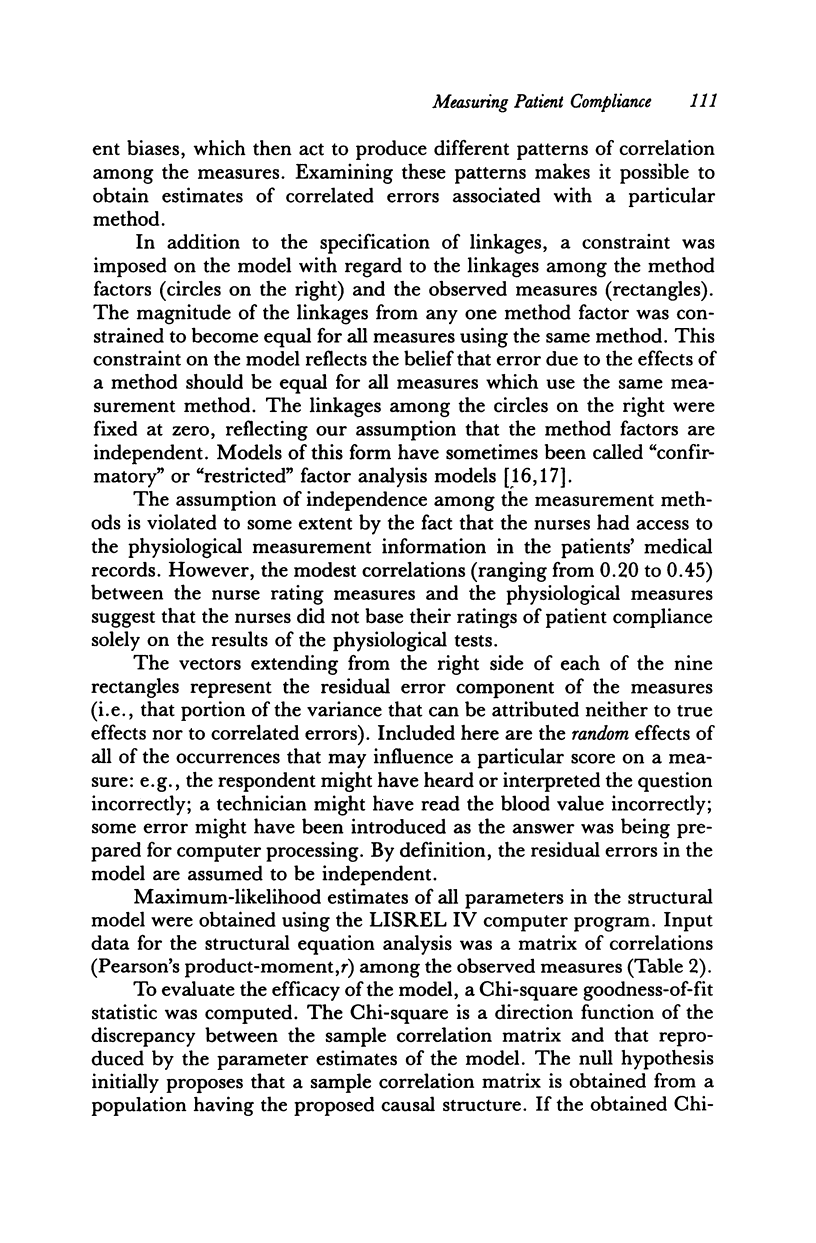
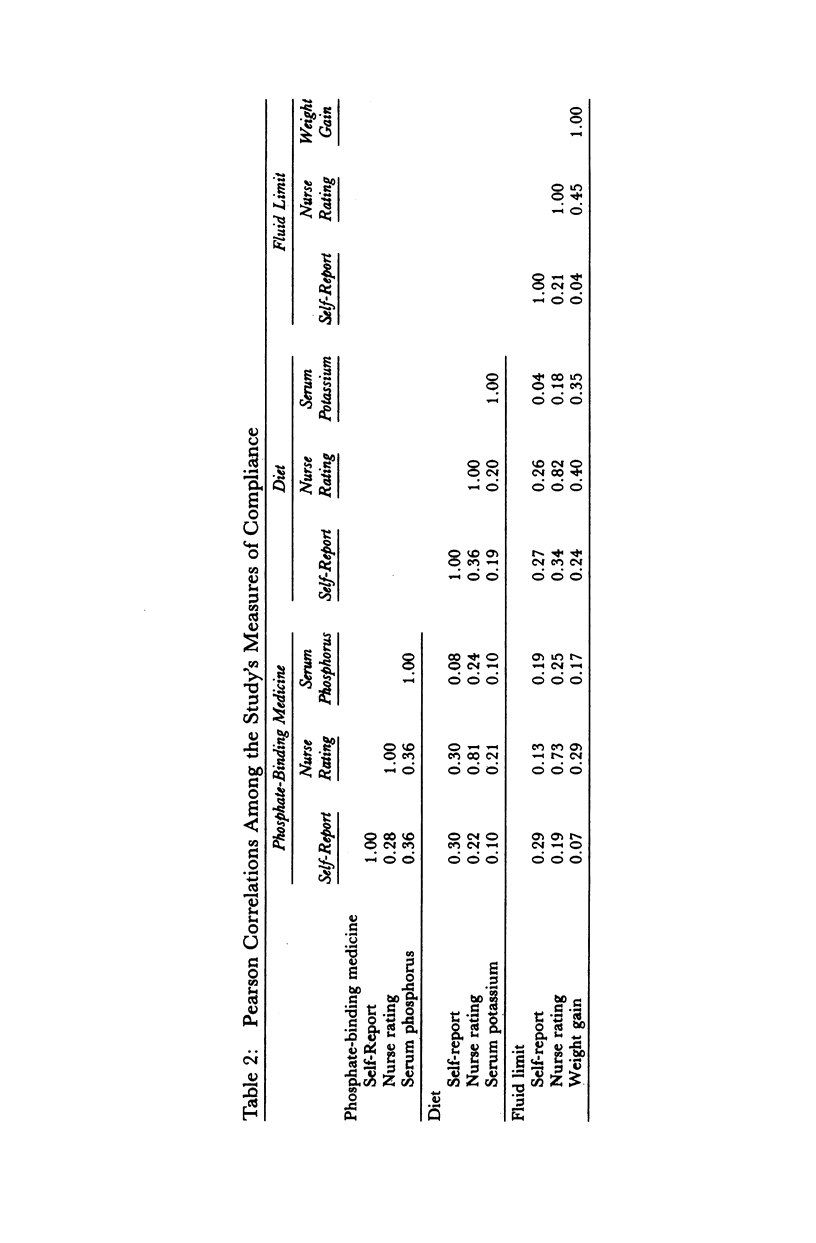
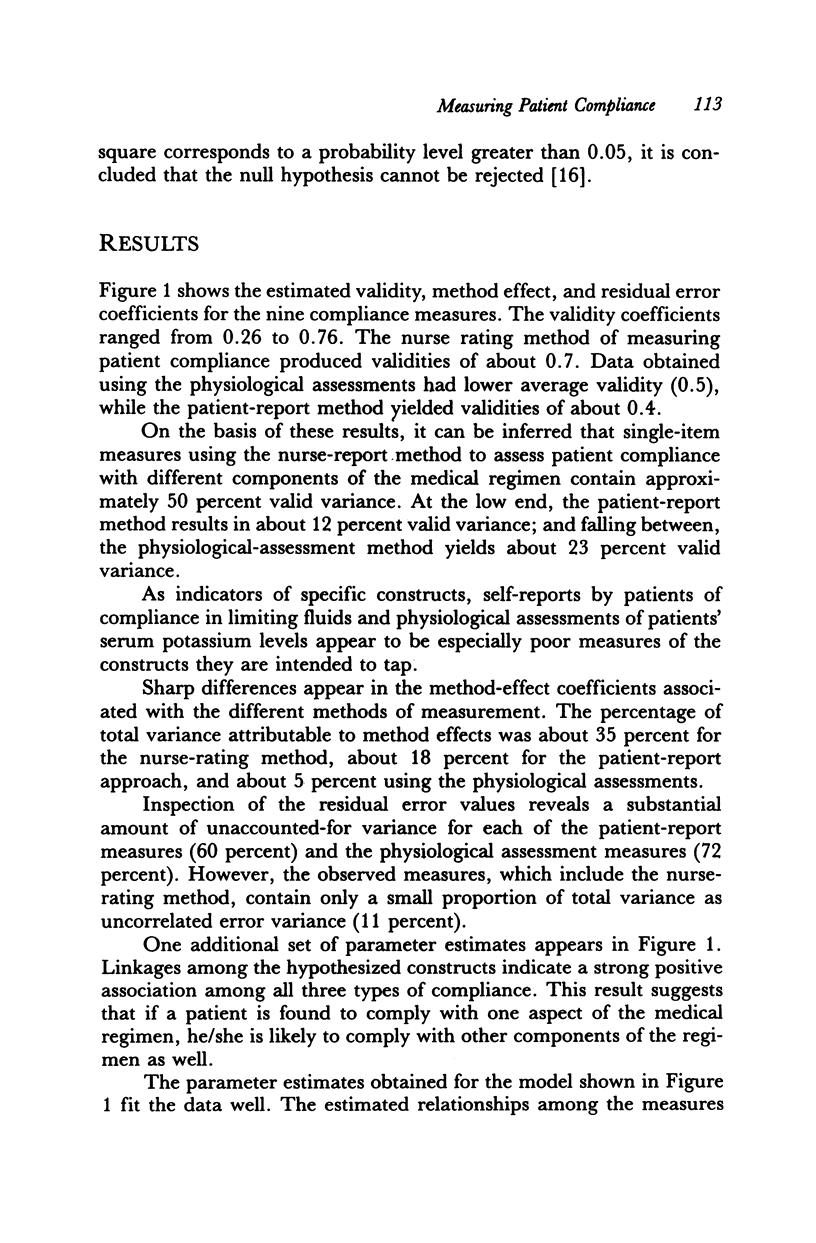
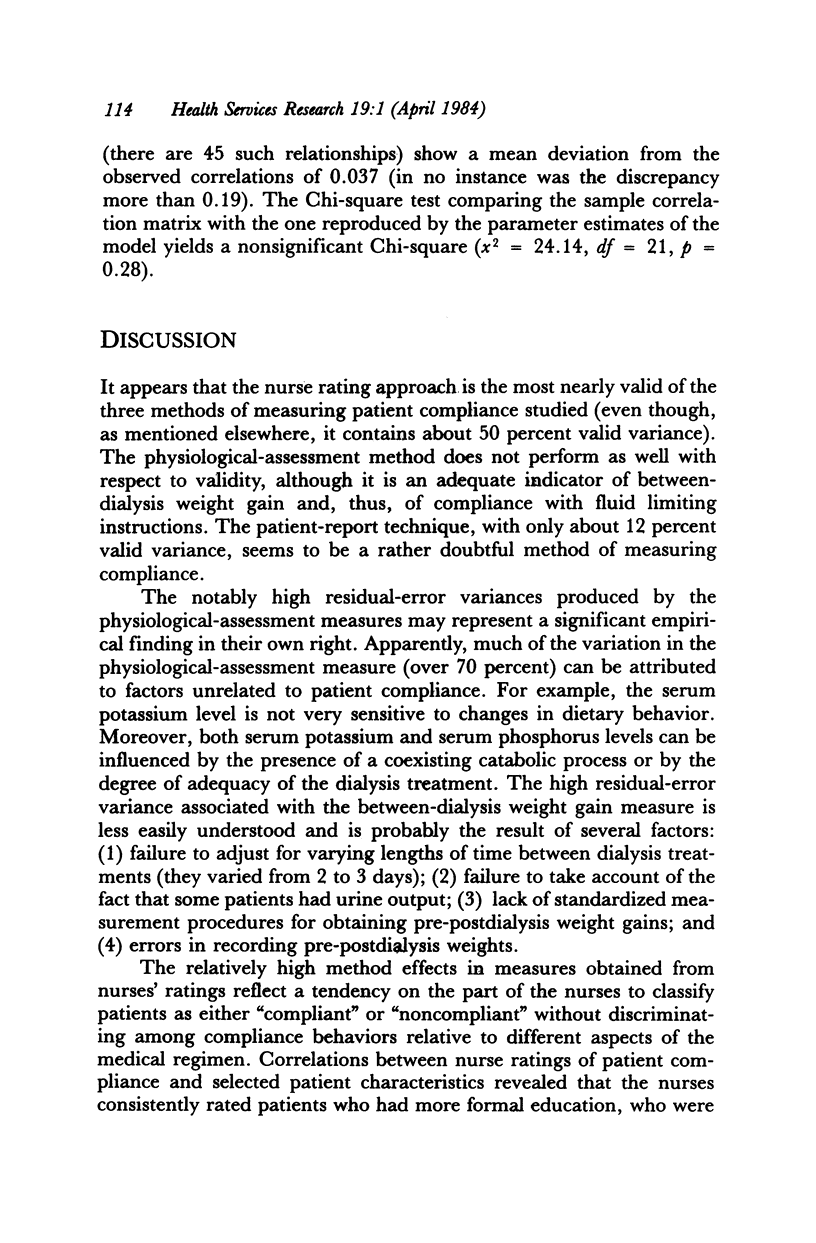
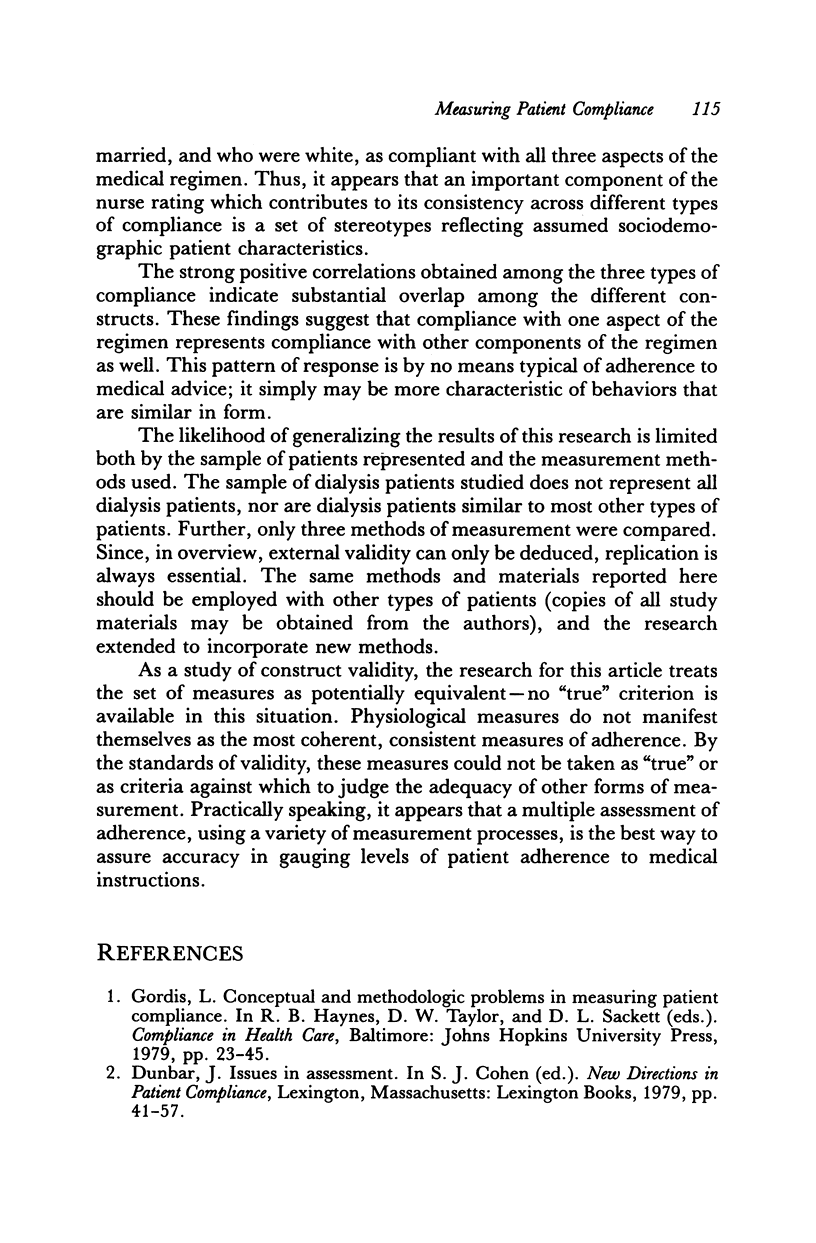
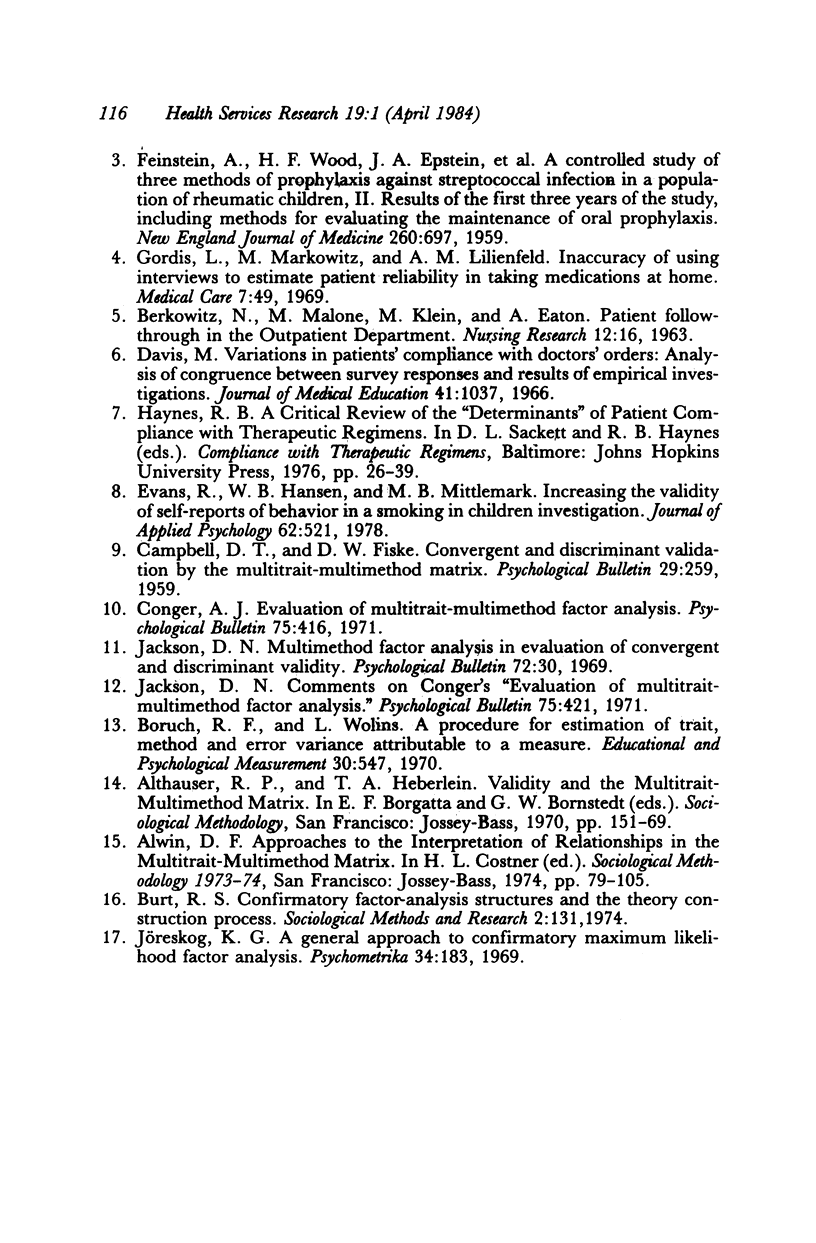
Selected References
These references are in PubMed. This may not be the complete list of references from this article.
- Davis M. S. Variations in patients' compliance with doctors' orders: analysis of congruence between survey responses and results of empirical investigations. J Med Educ. 1966 Nov;41(11):1037–1048. [PubMed] [Google Scholar]
- Evans R. I., Hansen W. B., Mittelmark M. B. Increasing the validity of self-reports of smoking behavior in children. J Appl Psychol. 1977 Aug;62(4):521–523. [PubMed] [Google Scholar]
- FEINSTEIN A. R., WOOD H. F., EPSTEIN J. A., TARANTA A., SIMPSON R., TURSKY E. A controlled study of three methods of prophylaxis against streptococcal infection in a population of rheumatic children. II. Results of the first three years of the study, including methods for evaluating the maintenance of oral prophylaxis. N Engl J Med. 1959 Apr 2;260(14):697–702. doi: 10.1056/NEJM195904022601405. [DOI] [PubMed] [Google Scholar]


